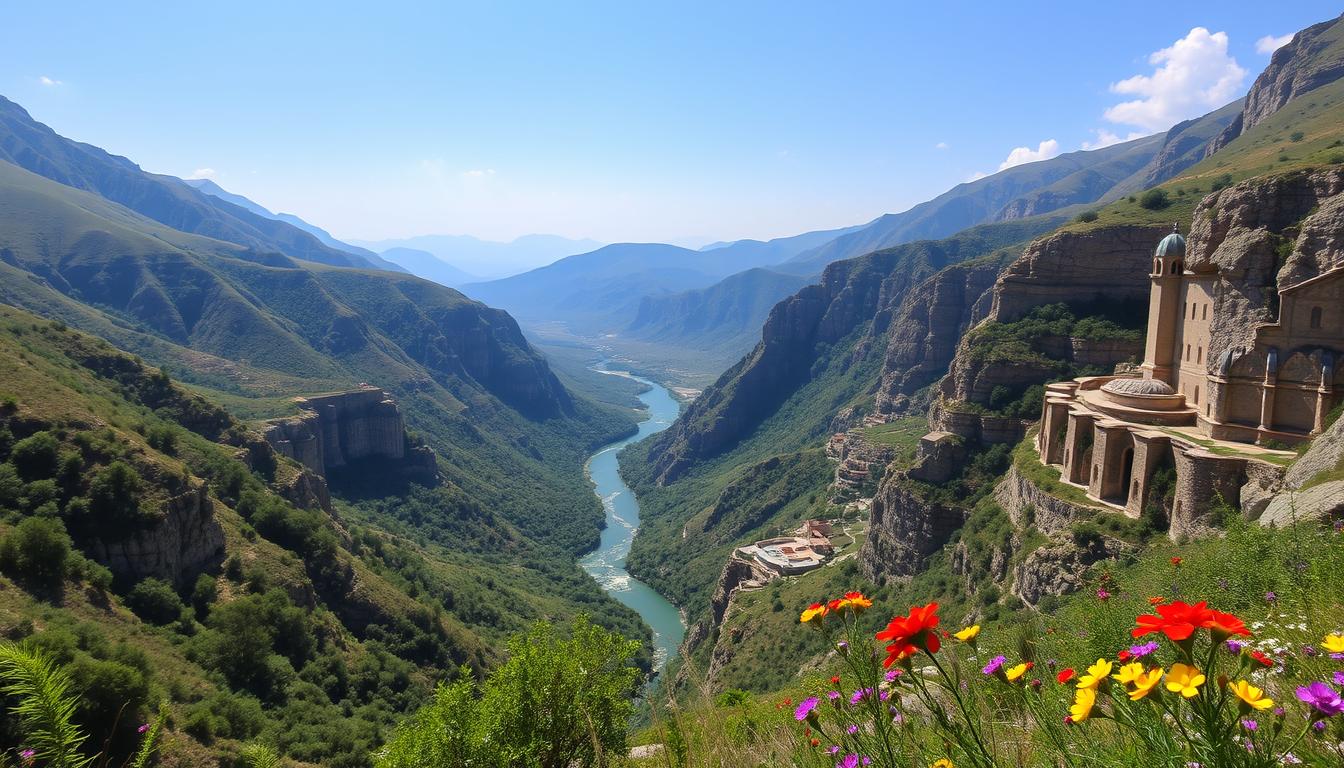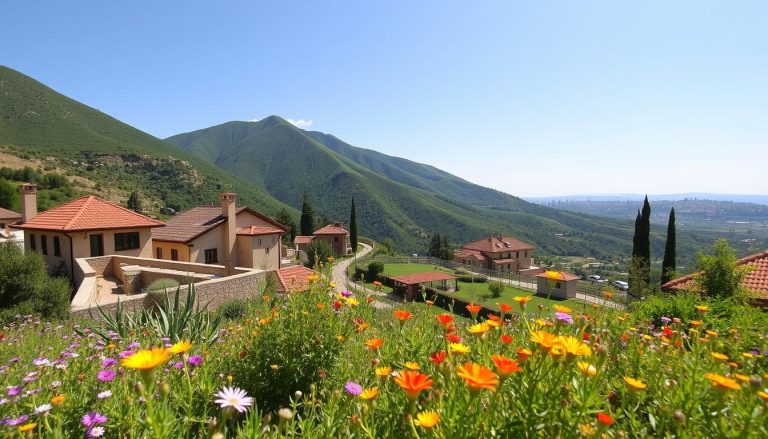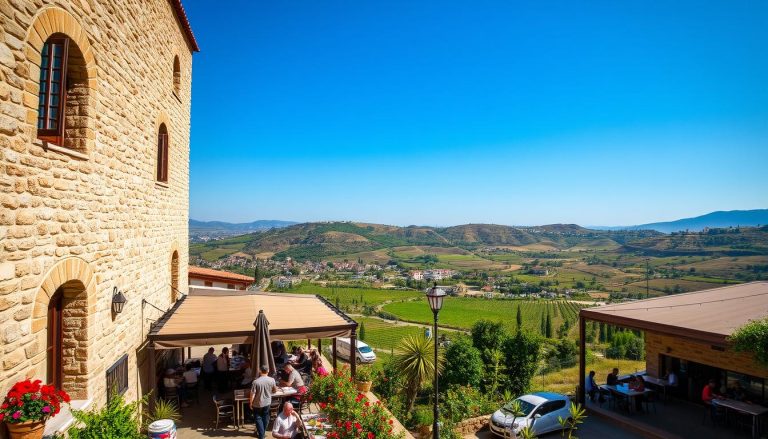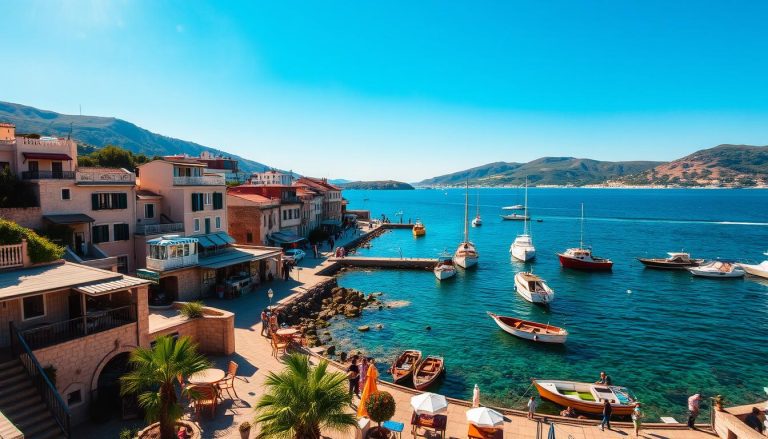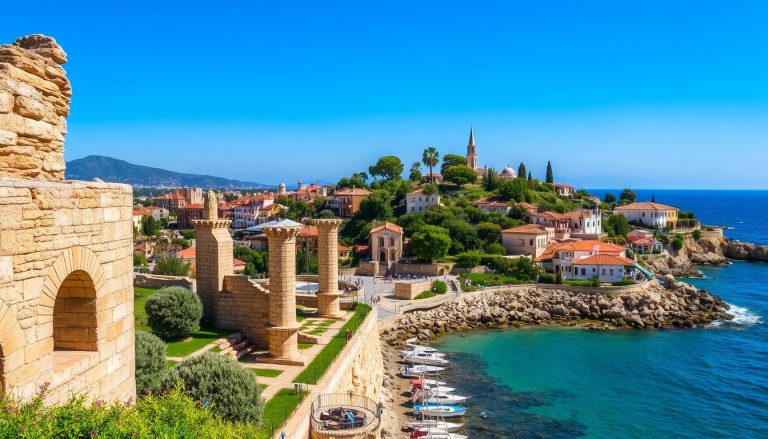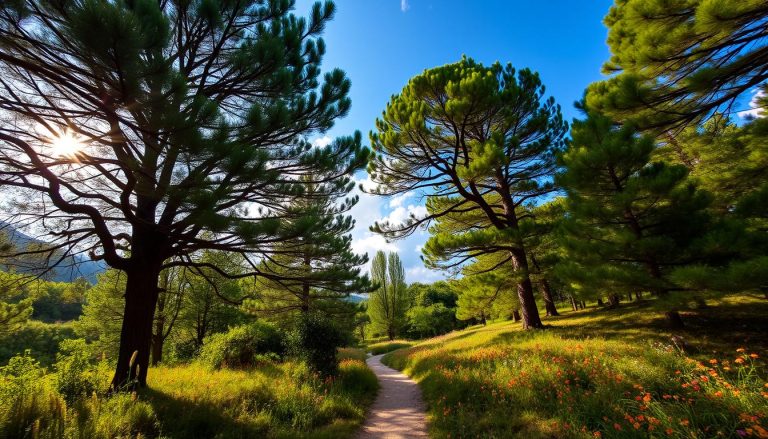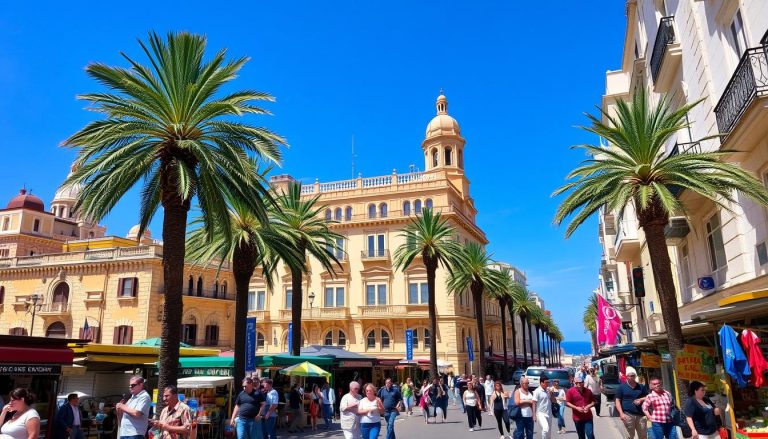Have you ever wondered why the Qadisha Valley in Lebanon is so breathtaking? It’s a UNESCO World Heritage Site in the country’s heart. Here, you’ll find spiritual sanctuaries, stunning landscapes, and a rich culture that has drawn travelers for centuries. Get ready for a journey that will change you as we explore the valley’s best spots.
Key Takeaways
- The Qadisha Valley is a UNESCO World Heritage Site in Lebanon, known for its spiritual sanctuaries and stunning natural landscapes.
- The valley is home to ancient monasteries, hiking trails, and natural wonders that showcase Lebanon’s rich cultural heritage.
- Visitors can explore the valley’s religious sites, adventure activities, and traditional Lebanese cuisine and communities.
- The Qadisha Valley is easily accessible from major cities like Beirut and offers the perfect escape for those seeking solitude and spiritual rejuvenation.
- Exploring the Qadisha Valley provides a unique opportunity to immerse yourself in Lebanon’s diverse religious and cultural tapestry.
Introduction to the Holy Valley: A UNESCO World Heritage Site
The Holy Valley, or Nahr Qadisha, is in Lebanon’s heart. It’s a UNESCO World Heritage Site known for its history, natural beauty, and religious importance. This valley has been a Christian refuge for many, offering safety from persecution.
Historical Significance of Qadisha Valley
The Qadisha Valley’s history goes back to early Christianity. It has been a safe place for Jacobites, Armenians, Maronites, and some Muslims. The valley’s monasteries and churches show its role as a center of faith and diversity.
Geographic Location and Natural Features
The Qadisha Valley goes from the Cedars of God Forest to Tripoli. It’s full of natural wonders. Its cliffs, rivers, and greenery have amazed visitors and artists for years.
Religious and Cultural Importance
The Holy Valley is very important to locals and visitors. Its monasteries, hermitages, and churches remind us of its role as a Christian refuge. It’s a place for spiritual thought and devotion.
“The Qadisha Valley is a place of extraordinary natural beauty and profound spiritual significance, a testament to the enduring human desire for refuge and connection with the divine.”
Getting to Qadisha Valley: Transportation and Best Times to Visit
The Qadisha Valley is a beautiful spot in Lebanon, easy to reach from Beirut. The drive along the Cheka – Amioun Road is stunning, with views that take your breath away.
The best times to visit Qadisha Valley depend on the season. Summer is great, but start early to beat the heat. Winter brings a magical touch with snow-covered landscapes.
Qadisha Valley offers something special all year round. You can ski in the morning and hit the beach in the afternoon. It’s a place of endless adventure and beauty.
| Transportation Options | Best Seasons to Visit |
|---|---|
|
|
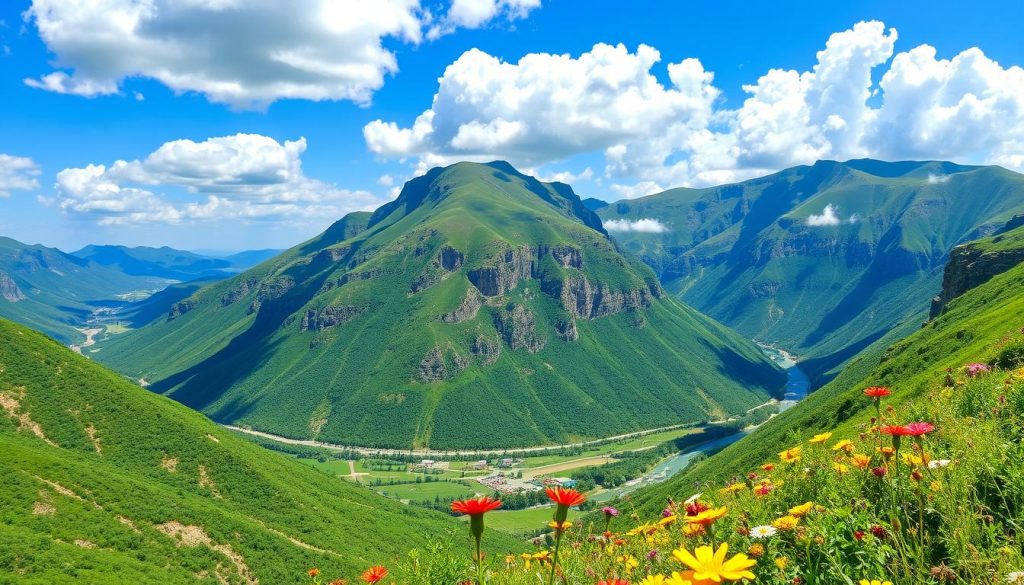
Visiting Qadisha Valley in summer or winter is an adventure. The trip from Beirut is unforgettable, making it a top spot for Lebanon travel.
Ancient Monasteries and Religious Sites
In the stunning Qadisha Valley, you’ll find ancient monasteries and religious sites. They show Lebanon’s deep spiritual history. Places like Saydit Amatoura Monastery, St. Simon Archaeological Monastery, and Saint Marina Monastery have stood for centuries. They are symbols of faith and devotion.
Saydit Amatoura Monastery
The Saydit Amatoura (Hamatoura) Monastery in Kousba is loved by many. It’s where St. Jacob, a famous hermit, started his life of prayer and fasting. You can see the monastery’s detailed architecture and feel the calm that has helped many in their spiritual journey.
St. Simon Archaeological Monastery
The St. Simon Archaeological Monastery sits on Bqerqacha’s cliffs. It has hidden hermit caves and a secret entrance behind a tall bell tower. This place shows the tough yet meaningful lives of the hermits who lived here, devoted to solitude and prayer.
Saint Marina Monastery
The Saint Marina Monastery honors a remarkable woman who lived as a monk. It shows the strength and faith of the Qadisha Valley’s religious community. You can learn about its history and enjoy the peaceful setting that has helped many find peace and understanding.
“The monasteries of the Qadisha Valley stand as a testament to the unwavering faith and determination of those who came before, their echoes still resonating within the hallowed halls and hidden caves of this sacred land.”
Hiking Trails and Natural Wonders
Get ready to be amazed by the stunning views of Qadisha Valley, a true Lebanese nature gem. This UNESCO World Heritage Site has a network of scenic trails. These trails take you through the valley’s dramatic landscape, showing you hidden wonders at every step.
As you climb the winding paths, the Qadisha Valley hiking journey changes. You’ll see the area’s varied natural beauty. You’ll pass through lush greenery, rugged rocks, and charming villages. It’s a feast for the eyes for anyone who loves adventure.
- Find ancient monasteries and hermit caves hidden in the valley.
- See the vibrant plants and animals, like tall cedars and rare birds.
- Enjoy breathtaking views from scenic spots.
Looking for a calm walk or a tough hike? The Qadisha Valley has trails for everyone. Dive into the peaceful atmosphere and let the valley’s wonders amaze you.
“Hiking through the Qadisha Valley is like embarking on a journey through time, where the past and present converge in a symphony of natural beauty.”
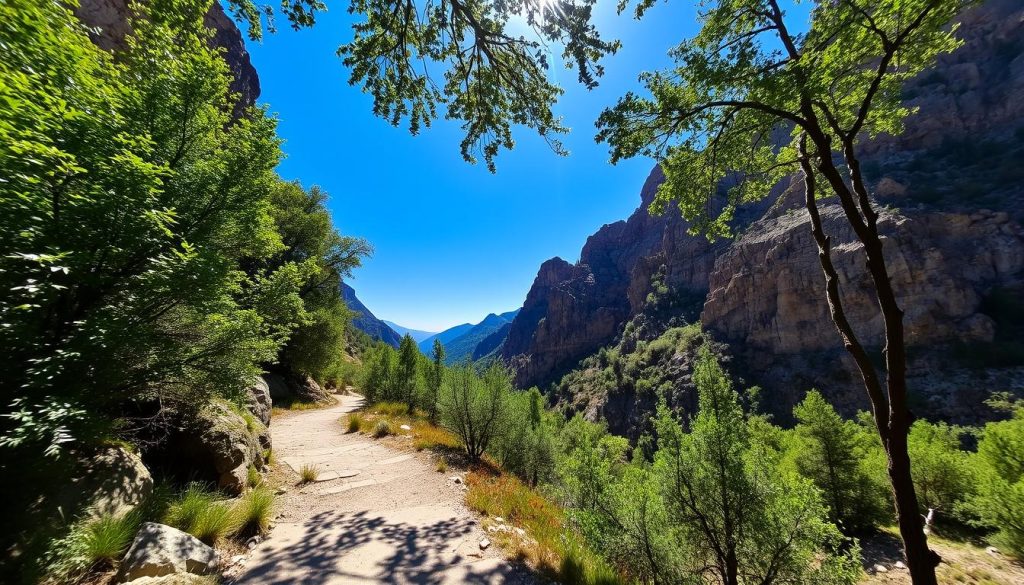
So, put on your hiking boots, grab your camera, and get ready to find the Qadisha Valley’s hidden treasures. It’s a true Lebanese treasure.
Qadisha Valley, Lebanon: Best Things to Do - Top Picks
The Qadisha Valley is in the heart of Lebanon. It’s full of adventure, culture, and stunning views. As a UNESCO World Heritage site, it invites you to explore its history and landscapes. You can explore caves, take photos, and dive into local culture for an unforgettable trip.
Cave Exploration and Adventure Activities
Exploring the ancient caves in the Qadisha Valley is a top attraction. The St. Simon Monastery cave is a thrilling adventure. It has narrow entrances and steep stairs that lead to hidden wonders.
These caves show the valley’s religious history and amazing geological formations. They’ve been shaped over thousands of years.
Photography Spots and Viewpoints
The Qadisha Valley is perfect for photographers. It has dramatic cliffs, waterfalls, and greenery. Find the best spots to capture stunning views.
From the mountains to the valleys, every part of this place is great for photos. It’s a photographer’s dream.
Cultural Experiences
Dive into the Qadisha Valley’s vibrant culture. Visit local villages and meet the friendly people. See the region’s rich religious heritage.
There are over 2,405 churches and 1,502 mosques. This shows Lebanon’s diverse population. Enjoy cultural workshops, traditional architecture, and Lebanese food to truly experience this place.
“The Qadisha Valley is a true gem of Lebanon, offering a unique blend of natural wonders, adventure, and cultural immersion. It’s a destination that will leave a lasting impression on every visitor.” – Travel Enthusiast
Local Villages and Communities
As you explore the Qadisha Valley, you’ll find charming villages and close-knit communities. These Lebanese village life spots show the traditional ways of life that have lasted for generations.
Visit bustling markets where locals sell fresh produce. Or enjoy a cup of Lebanese coffee in cozy cafes. These traditional communities welcome visitors warmly. Walk through the streets and see the Qadisha Valley towns‘ old buildings, telling stories of the past.
Talk to the friendly locals who love to share their culture and traditions. Try a home-cooked meal or join a community event. This way, you’ll really feel the spirit of Lebanese village life in the Qadisha Valley.
Discover Bsharri, known for its ancient churches and monasteries, or Akoura, famous for its traditional crafts. You’ll be drawn to the locals’ warmth and genuine way of life.
| Village | Highlights |
|---|---|
| Bsharri | Ancient churches, monasteries, and stunning natural scenery |
| Akoura | Traditional handicrafts, such as weaving and pottery |
| Hasroun | Charming stone houses, local markets, and outdoor activities |
| Bcharre | Cedars of God, a UNESCO World Heritage site, and the birthplace of the poet Khalil Gibran |
Dive into the rich world of traditional communities in the Qadisha Valley. You’ll gain a deep respect for Lebanese village life and its lasting traditions.
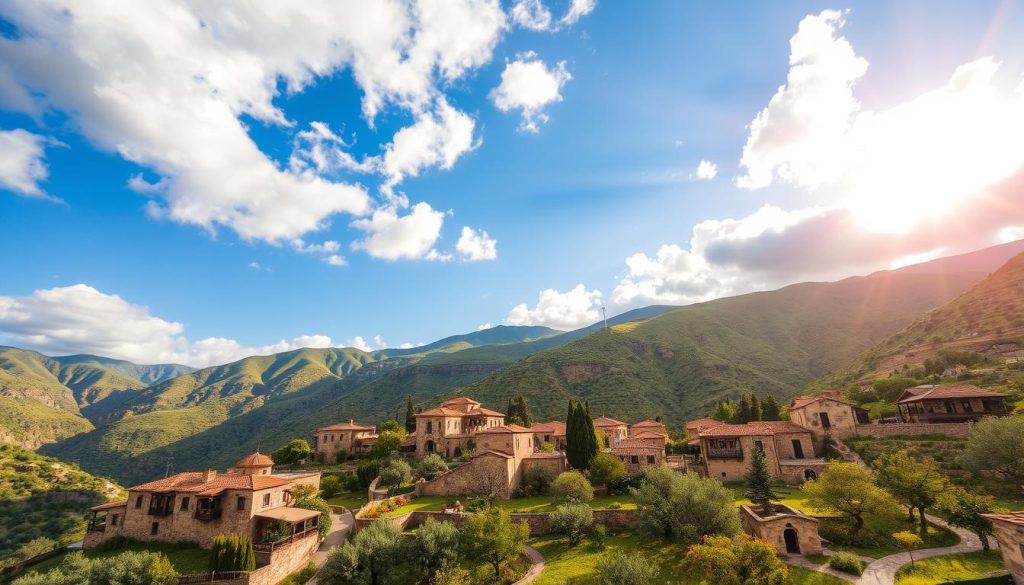
Historical Landmarks and Architecture
Qadisha Valley is in the heart of Lebanon. It has many historical landmarks and architectural wonders. These take visitors back in time. You can see tall bell towers, ancient structures, and traditional Lebanese buildings.
Bell Towers and Ancient Structures
The valley is famous for its bell towers. They stand like silent guards, showing the area’s religious history. There are also ancient structures like churches built on old pagan temples.
Traditional Lebanese Buildings
Walking through the valley, you’ll see traditional Lebanese buildings. They show the area’s architectural heritage. Each building has unique designs and materials, telling stories of the valley’s culture.
Historical Cave Dwellings
The valley’s cave dwellings are truly fascinating. They were used for pagan rituals and by Christian hermits. These dwellings show the valley’s past and the ingenuity of its people.
“Lebanon has a rich and varied architectural heritage, with buildings that reflect the country’s diverse cultural influences and the resilience of its people.”
Traditional Lebanese Cuisine in the Valley
Explore the Qadisha Valley and find a world of flavors. This area is known for its Lebanese food and delicacies. You’ll love the Qadisha Valley restaurants that share Lebanon’s food heritage.
Try the manouche, a flatbread loved for breakfast. It’s topped with thyme, sesame seeds, and olive oil. Enjoy it with Lebanese coffee or orange juice.
The valley also has seafood dishes like grilled fish and shrimp. These are made with fresh sea catches and local herbs.
Many Qadisha Valley restaurants offer beautiful views. You can eat while seeing the valley’s beauty. There are cozy spots and fancy places for all tastes.
| Dish | Description | Average Price |
|---|---|---|
| Manouche | Traditional Lebanese flatbread with thyme, sesame, and olive oil | $2 – $4 |
| Grilled Fish | Fresh seafood caught from the nearby coast | $10 – $15 |
| Shrimp Mezze | Assortment of small dishes featuring succulent shrimp | $8 – $12 |
Dive into the Qadisha Valley’s food scene. Taste the real flavors that make it a Lebanese food paradise.
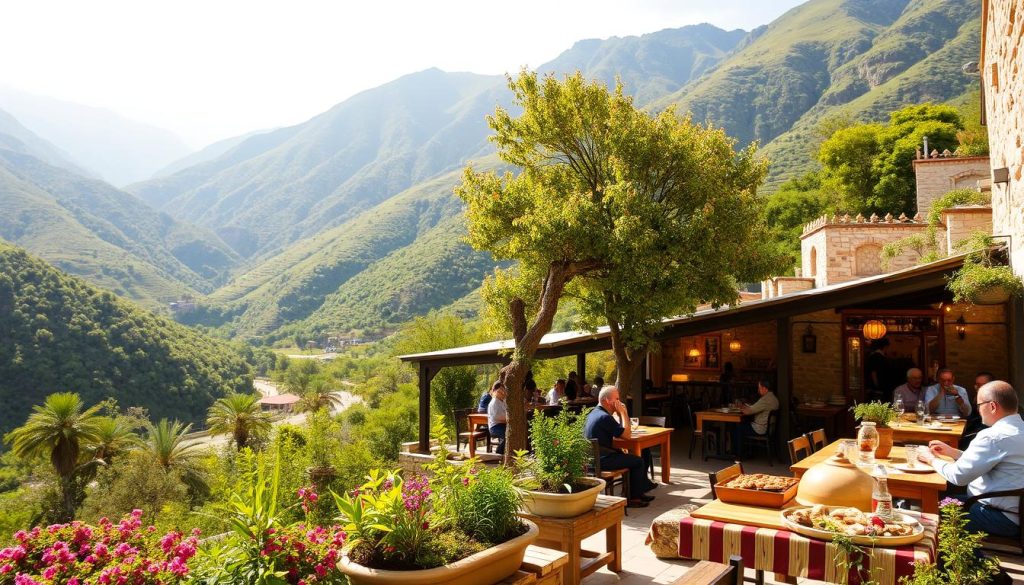
Practical Tips for Visitors
Planning a trip to the Qadisha Valley in Lebanon? Here are some tips to make your visit smooth and fun. From what to pack to understanding local customs, these tips will enhance your experience in this UNESCO World Heritage site.
What to Pack
The Qadisha Valley has varying temperatures. Pack layers for warm days and cool nights. Wear comfortable shoes for hiking and exploring. Remember to bring sun protection like hats, sunglasses, and sunscreen.
Safety Guidelines
Stay safe in the Qadisha Valley. Be careful on steep paths and respect historical sites. Stick to marked trails and follow local guides. Know the emergency contacts in case of an emergency.
Local Customs and Etiquette
The Qadisha Valley holds deep religious and cultural value. Dress modestly when visiting monasteries and sacred sites. Avoid taking photos without permission and respect the local community.
Follow these tips for a safe and enriching visit to the Qadisha Valley. Enjoy the history and natural beauty of this special region in Lebanon.
| Tip | Description |
|---|---|
| Packing | Bring layers of clothing, sturdy shoes, and sun protection |
| Safety | Exercise caution on steep paths, respect boundaries, and familiarize yourself with emergency contacts |
| Customs | Dress modestly, respect photography restrictions, and be mindful of the local community |
Conclusion
The Qadisha Valley in Lebanon is a place of wonder. It combines stunning nature, deep history, and spiritual importance. As a UNESCO World Heritage Site, it showcases Lebanon’s rich culture and faith, inviting visitors to travel back in time.
This valley has ancient monasteries, hermit caves, and beautiful hiking trails. It also has traditional villages. No matter what you’re looking for, the Qadisha Valley has it all. It offers a spiritual retreat, cultural immersion, or an outdoor adventure that will stay with you forever.
Visiting the Qadisha Valley is more than a trip. It’s a chance to connect with Lebanon’s heritage and traditions. As you explore, you’ll see the valley’s natural beauty, its religious importance, and the kindness of the local people. It’s a unique and enriching experience that truly captures the essence of Lebanon.
